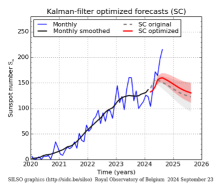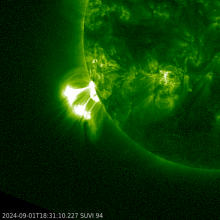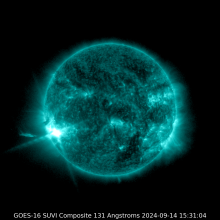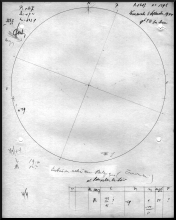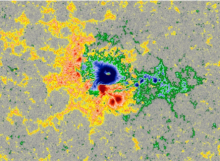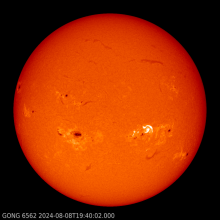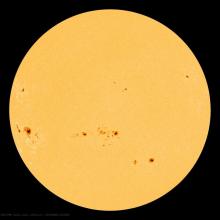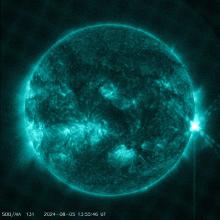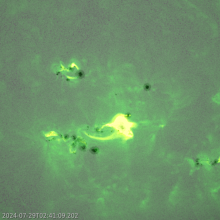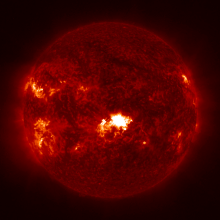The Sun has been very active during the last few months. Since April this year, many large and complex sunspot groups have adorned the solar disk driving the daily sunspot number regularly to well above 250 (see the SIDC/USET image for 7 August underneath).
SIDC News
A compilation of some amazing solar eruptions that have been observed during the first half of September.
NOAA 3825 produced its 2nd X-class flare in as many days. The X4.5 flare peaked on 14 September at 15:29UTC. ***UPDATED (1)***
80 years ago, the Allies liberated Brussels, and this event did not go unnoticed by our solar observers!
Once more, the solar physics team of the Royal Observatory of Belgium invites external researchers to join in the data exploitation of its space telescopes on the PROBA2 microsatellite (SWAP, LYRA) and on Solar Orbiter (EUI).
In the past couple of weeks, the radio-astronomy team has worked relentlessly on a new setup and calibration procedure for the SPADE instrument.
NOAA 3784 joined the club of X-class flare producing regions by unleashing an X1.1 on 14 August.
NOAA 3777 produced an X1.3 flare on 8 August. The associated CME has an earth-directed component. ***UPDATED (3)***
Driven by solar activity in especially the southern solar hemisphere, sunspot numbers reached their highest monthly values since December 2001.
An X1.7 flare was produced on 5 August at 13:40UTC. It was followed by an X1.1 flare at 15:27UTC produced by a different active region. ***UPDATED***
An M9.9 flare and an X1.5 flare were observed from the same active region NOAA 3766 on resp. 28 and 29 July.
Old NOAA 3738 produced a very strong X-class flare late on 22 July. Solar Orbiter's STIX instrument indicates this might have been an X14 flare. The associated CME is heading away from Earth, towards Solar Orbiter. ***UPDATED***
